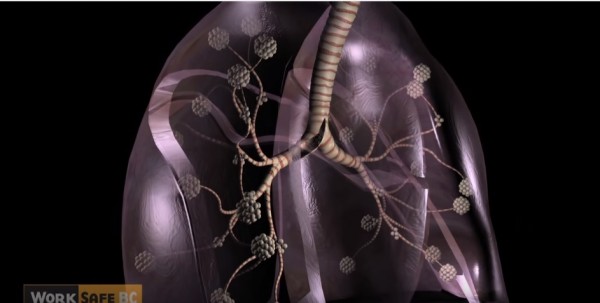China Encourages Employers to Conduct Routine Assessment for Pneumoconiosis
| Charissa Echavez | | Jan 22, 2016 06:42 AM EST |
(Photo : YouTube Screenshot) Because of the increase of the number of cases, the National Health and Family Planning Commission is encouraging employers to check their employees for possible signs of pneumoconiosis, a group of lung disease caused by inhaling dust particles.
Chinese health officials have cautioned companies in pneumoconiosis-prone fields to continuously assess their employees and make sure proper treatment is sought when the disease is diagnosed. A report released in December showed that there were nearly 27,000 new cases in 2014, that is 16-fold higher compared with the previous years.
Like Us on Facebook
Of all occupation-related illnesses, about 90 percent of the cases are caused by pneumoconiosis. The National Health and Family Planning Commission in recent years has found that people who are diagnosed with the illness are at an increasingly younger age. Those living in the central and western regions are said to be the most prone, particularly people in jobs related to construction materials, mining and nonferrous metals.
"Employers should provide health checks for workers before, during and after jobs in which they are exposed to various kinds of dust," a statement released by the commission said. It further pointed out that an appropriate budget should be allocated for medical or work insurance to ensure adequate treatment is provided even to those who cannot afford it. The health agency also suggested that patients infected with pneumoconiosis should seek aid subsidies from their respective local government.
Pneumoconiosis is a group of lung disease resulting from inhaling dusts particles, which become lodged deep in the lungs and cause damage. Otherwise known as the "Black Lung Disease," it is considered an occupational lung disease.
The disease is characterized by cough and shortness of breath. The risk is relatively high for those who are exposed to mineral dusts such as silica, asbestos and coal dust at increased concentrations or for a long period of time. So far, there is no known cure for the disease, and the best option is to provide palliative care to decrease further lung damage, relieve symptoms and improve patients' quality of life.
TagsPneumoconiosis, Black lung disease, china, National Health and Family Planning Commission
©2015 Chinatopix All rights reserved. Do not reproduce without permission
EDITOR'S PICKS
-

Did the Trump administration just announce plans for a trade war with ‘hostile’ China and Russia?
-

US Senate passes Taiwan travel bill slammed by China
-

As Yan Sihong’s family grieves, here are other Chinese students who went missing abroad. Some have never been found
-

Beijing blasts Western critics who ‘smear China’ with the term sharp power
-

China Envoy Seeks to Defuse Tensions With U.S. as a Trade War Brews
-

Singapore's Deputy PM Provides Bitcoin Vote of Confidence Amid China's Blanket Bans
-

China warns investors over risks in overseas virtual currency trading
-

Chinese government most trustworthy: survey
-

Kashima Antlers On Course For Back-To-Back Titles
MOST POPULAR
LATEST NEWS
Zhou Yongkang: China's Former Security Chief Sentenced to Life in Prison

China's former Chief of the Ministry of Public Security, Zhou Yongkang, has been given a life sentence after he was found guilty of abusing his office, bribery and deliberately ... Full Article
TRENDING STORY

China Pork Prices Expected to Stabilize As The Supplies Recover

Elephone P9000 Smartphone is now on Sale on Amazon India

There's a Big Chance Cliffhangers Won't Still Be Resolved When Grey's Anatomy Season 13 Returns

Supreme Court Ruled on Samsung vs Apple Dispute for Patent Infringement

Microsoft Surface Pro 5 Rumors and Release Date: What is the Latest?













